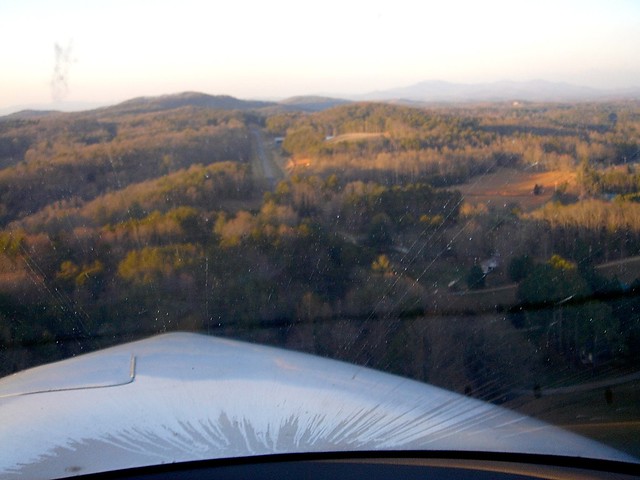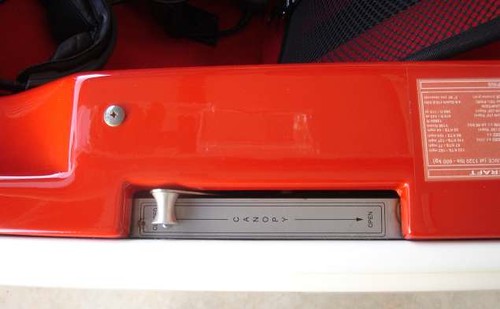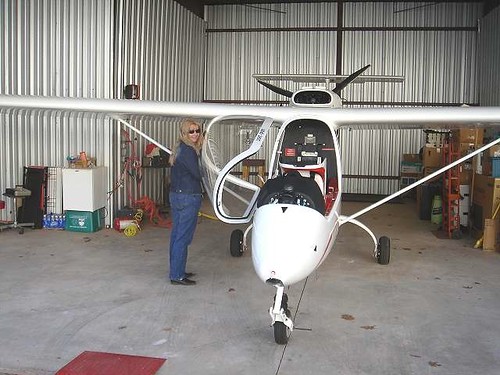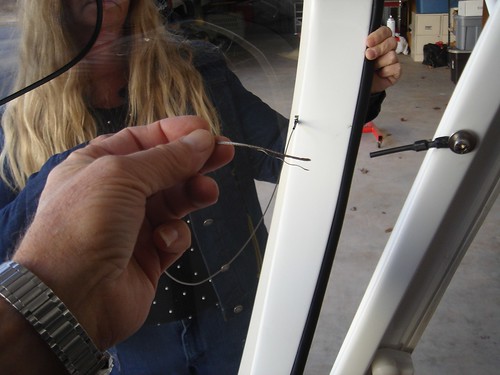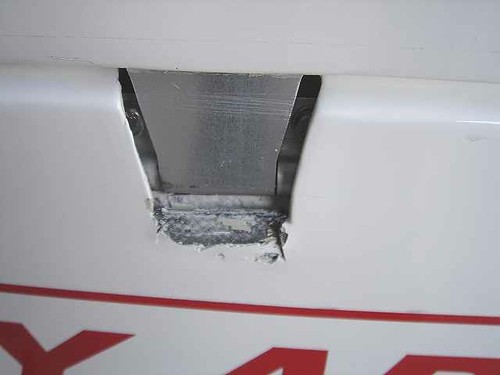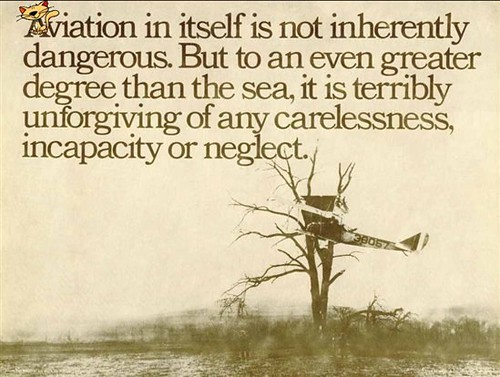I'm big on using checklists, and agree that many scream out to be personalized and streamlined.
But I present this as a cautionary tale, posted to the Cirrus Owner's site in 2008:
Here’s the setup:
Karen’s mom lives in Maryville, TN, and Karen still has a lot of friends in Knoxville, so every week or two she likes to visit. She had driven up Thursday. Saturday was a beautiful day in the southeast once the fog lifted, so I flew up in our Sky Arrow to pick her up.
It was a letter-perfect flight up. We ran some errands and then loaded up the plane to fly home. Another perfect flight, which took us over Fields of the Wood (the big Ten Commandments). We did a circle over that, flew over Copperhill, TN airport, then directly to Blue Ridge Skyport (57GA, my home base). Flew downwind, got full flaps in on base and was set up pretty much perfectly to slip between the trees on final and end another beautiful flight.
This view is from a Cirrus, and I now offset a bit more to the left and a little lower, but this was pretty much the view:
In fact, I was thinking what a pretty picture it would have made in the Sky Arrow, when at about 500’ and 55k I dropped the left wing and held some right rudder to slip down to the runway when...
...THE FREAKING CANOPY BLEW OPEN!!!
My Gander Mountain cap blew off, apparently exiting the plane. My headset, caught by the cord, ended up behind me.
I did not even consider futzing with the canopy. The relative wind was strong, but I had my glasses on and it wasn't worse than a motorcycle at about 65 mph.
Anyway, I did what I was taught to do: I flew the plane. In spite of the excitement I did a pretty darn good full-stall landing about 1/3 of the way down the 3,000’ runway.
As we taxied down the runway I looked around and saw the canopy latch was in the “OPEN” position. Here’s the latch in the proper, “CLOSED” position:
We taxied back to the hangar and shut down. We exited the plane. I felt like such a doofus.
Inspecting the plane, it seems that, other than a broken restraining cable (the one that normally holds the canopy when it’s in the open position on the ground) and some composite damage under the canopy hinges, everything else is fine.
It appears I never latched the canopy before takeoff in Knoxville. I’m amazed it gave no indication of that until it blew open.
I spent some time asking myself how, being “Mr. Checklist”, I could have missed something so important. We’re all human, but my checklist procedures are usually better than that.
In 80+ hours in the Sky Arrow I’d never forgotten the latch - I usually close and latch the canopy in one motion just prior to takeoff. But Karen remembers me closing it early in order to hear the ground controller better. Maybe that got me out of sequence somehow.
So, I got out my personalized checklist to see how I might have missed “Canopy - CLOSED AND LATCHED”, and guess what? It’s nowhere to be found.
The checklist that came with the Sky Arrow was about four pages long and contained so much extraneous stuff I streamlined it to essentials. Somehow I forgot to include the canopy check. Yikes!
Right now I can’t find the poster with the plane in the tree that talks about the unforgiving nature of flying*. I’d say! A one-line omission one night in front of my computer while typing up a checklist could have cost us our lives!
I was never “scared” after the canopy blew open - I was too busy dealing with the landing. Afterwards I was mainly peeved at and disappointed in myself and trying to figure out how it happened. Only later have I been playing out all the ways it could have gone a whole lot worse.
Remember, the Sky Arrow has a pusher prop, so had the canopy departed the plane it could have taken out the prop. Not to mention the aerodynamic blanketing effect that open canopy might have had on the right aileron and flap and on the horizontal stabilizer, elevator and rudder. The Sky Arrow has a T-tail and that probably helped somewhat.
Anyway, what’s the lesson? USE YOUR CHECKLIST is obvious - forgetting the canopy latch is not something I’d want to do on a regular basis. But, equally important, CHECK YOUR CHECKLISTS, especially if you’ve modified, personalized or streamlined them in any way. Make sure ALL the important stuff is there.
And, in closing, let me just say what a trouper Karen is. She said she shouted “OMIGOD” when the canopy blew, not knowing if I had been injured or if I could control the plane. I don’t remember hearing her (but I was kinda focused on something else!). In any case she still has faith in me and is ready, willing and able to go up with me anytime.
I think I’ll keep her!
*Found it:

